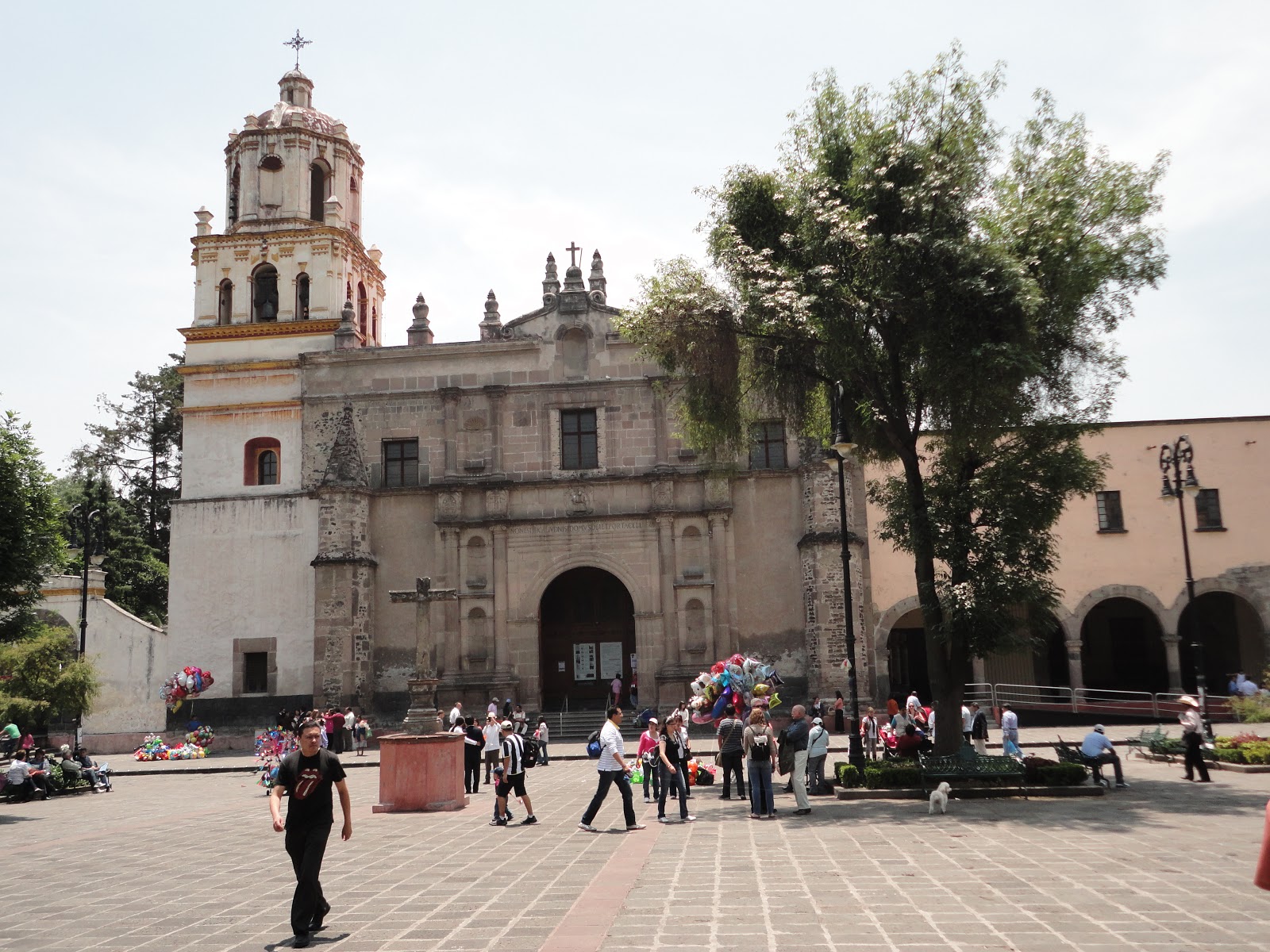Last week I took a day trip to Tepotzlan, a village about an hour from Mexico City in the state of Morelos. Tepotzlan is known for its stunning scenery -- it is located in a valley surrounded by jagged peaks. It is also known popularly as a place of great spiritual energy, and is home to new age homeopathic pharmacies, health food stores selling organic produce and shops selling incense and crystals.
Since I had come during the week after Easter, there were still quite a few people and there was still quite a lot of traffic. But the photos below give the general idea of the ambience of the town.
I didn't spend much time in the town of Tepotzlan, though. It is also famous for a pyramid, and so I decided to climb up to see it. Ignoring the signs at the bottom of the 'hill' that indicated the hike up to the top where the pyramid is located is only to be attempted by the physically fit, I ventured forth. Signs suggested that at a steady pace the summit could be reached in about 45 minutes or so... It took me almost 2 hours to ascend what was a steep and, in places, treacherous climb.
However, along the way I was rewarded with great vistas.
Towards the end of the hike, the pyramid finally came into view. And I thought, I still have to climb all the way up there?
During the pre-Columbian era the location made the pyramid -- and the small village around it -- easily defensible against enemies.
The reward for the climb is the view to the town down below in the valley. (The pyramid itself is very modest in size -- only about 15 meters high. )
One curiosity of the site was a family of coati -- a raccoon-like animal native to Mexico.
Like raccoons, coati are omnivores, and have figured out that the tourists usually have food in their bags and backpacks, so they are quite brazen in approaching tired hikers.
Because I spent most of my time on the mountain, I didn't see much of the town -- more for another visit. I did, however, see this amazing mural on the portal leading to one of the town's church's. What's remarkable is that it is made entirely of seeds. For that reason it needs to be replaced every couple of years.
Can't wait to return to this captivating place.























































